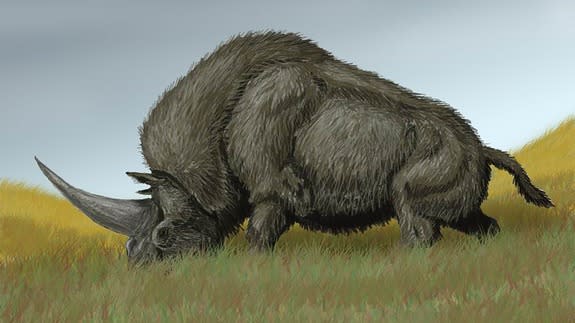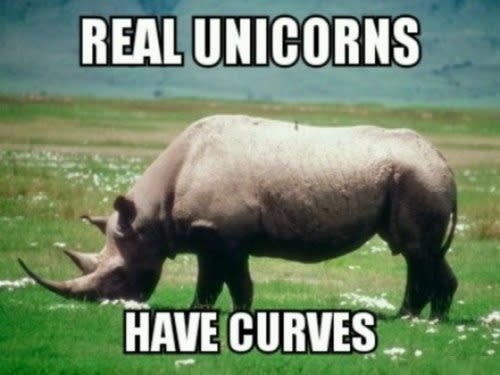Siberian unicorn rhinoceros may have lived far more recently than thought

The Siberian rhinoceros, also known as the "Siberian unicorn," may have roamed the Earth far more recently than previously thought, a new study has found.
The discovery of a fossilized Elasmotherium sibiricum skull in Kazakhstan has led paleontologists to significantly move up the time when the animal last roamed the Earth, according to a new study published in the open access American Journal of Applied Sciences.
Previous discoveries have led scientists to believe that unicorn rhinos were mammoth-like creatures, standing at about 6 to 7 feet tall and weighing about 8,000 pounds. This one fits that mold, which is not anything like the majestic and dainty white unicorns depicted in fairytales.
See also: These 21 extinct animals once ruled the UK
The piece of bone suggests that a number of the Siberian rhinoceros, named after its pointy horn, may have lived long after scientists thought it went extinct. Radiocarbon dating of the fossil suggests that the skull came from an animal that lived as recently as 29,000 years ago, which would mean that the animal's previous extinction date of 350,000 years ago needs some serious adjustment.

Image: Altushost
Researchers, who say the skull probably belonged to an older male, were fortunate that the bone was in relatively good condition, according to a press release. Paleontologist Andrey Shpanski of Tomsk State University, in Tomsk, Russia, was able to deduce where the unicorn might have lived, and why it might have survived when its known-relatives died out thousands of years before.
"Most likely, the south of Western Siberia was a [refuge], where this rhino persevered the longest in comparison with the rest of its range. There is another possibility that it could migrate and dwell for a while in the more southern areas," said Shpanksi, who published his team's findings in the American Journal of Applied Sciences, in a statement.
The team is hoping the discovery will help them understand how environmental factors contribute to an animal's extinction.
"Our research makes adjustments in the understanding of the environmental conditions in the geologic time in general," Shpanksi said. "Understanding of the past allows us to make more accurate predictions about natural processes in the near future."

 Yahoo Movies
Yahoo Movies 
